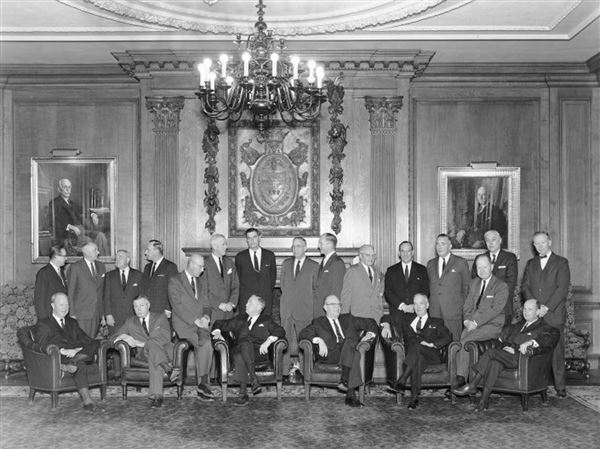A host of logistical problems snarled traffic at the Port-au-Prince airport on Thursday, forcing the airport to turn planes away, stranding relief workers for hours and threatening to delay the relief supplies that Haiti so desperately needs.
"The life clock is ticking away," said Chief David C. Downey, one of 80 members of Miami-Dade Rescue who were waiting for transportation to get out of the airport on Thursday. "The sooner we can get to work and find people who are buried, the better."
During the day, planes lined up 10 deep on the tarmac, many just parked with not enough fuel to go anywhere, while others circled above the city waiting to land. To the extent that Toussaint Louverture International Airport was able to function, it was thanks largely to the two air traffic controllers from the United States Air Force who had taken over the damaged tower and the United States Army soldiers who were directing ground operations.
While some search and rescue teams were able to land, the first large cargo shipment, of water and medical supplies, was not scheduled to arrive until Friday at the earliest, according to the humanitarian arm of the shipping company DHL. But logistical challenges -- no fuel for planes to leave, only one warehouse to hold the expected influx of materials and no clear plan of how to distribute supplies from the airport once it arrives -- put the aid effort at risk.
Florian Westphal, a spokesman for the International Committee of the Red Cross in Geneva, said that some relief planes had landed in Port-au-Prince, but that there were no crews to unload them and "little security."
By the afternoon, the airport was turning flights away because it could not accommodate them.
Chris Weeks, DHL's director of humanitarian affairs, who has worked in disaster relief in tsunami- and hurricane-hit countries for five years, said, "I've got the feeling that this one is going to turn out worse than all of them because the airport itself is part of the victim in all of this."
Rescue teams trying to leave the airport to start work in Port-au-Prince waited more than two hours for transportation to the American Embassy, just three miles from the terminal.
With air traffic to the capital cut off, some rescue organizations flew to Santo Domingo, in the Dominican Republic, to try to reach Port-au-Prince by bus or truck. Mr. Weeks said that he expected the airport there to become the secondary staging area for the aid efforts.
Gilberto Castro, DHL's disaster response manager, said in a telephone interview with reporters that his team of six relief workers, who had arrived in the late morning Thursday, would be helping the United States military take the freight off the planes, and then storing it in one of three hangars. But how the aid would be distributed remained a question.
"To know where to take it and to know where to hand it over safely, that's one of the big issues that humanitarian agencies have," he said. "If we're not going to be getting the aid out in a hurry, it has to be taken out of the aircraft, and it needs to be stored."
Mr. Castro said that although the United States Army was controlling the ground operations, he was concerned about security. "Security is going to be an issue over the next few days," he said.
In addition to soldiers from the United States, France and other countries milling around on the tarmac, there were police rescue teams, diplomats, members of aid groups and anxious Haitian families trying to flee.
A fortunate handful of Haitians had secured seats on small charter planes. Velina Charlier, 29, said her company, Digicel, had chartered a plane to fly a dozen or so employees to Jamaica. She stood just inside the airport lobby by a United Nations check-in desk, covering the ears of her 28-day-old baby, Isis, who slept calmly amid the noise.
"I can't take the chance with her," Ms. Charlier said. "It's going to be too difficult to get food and water, and I'm breastfeeding."
Officials from Doctors Without Borders were due to arrive in Port-au-Prince on a plane from Panama with supplies on Thursday, and the group had six more chartered planes scheduled to arrive in the next few days, said François Servranckx, a spokesman for the group.
Mr. Servranckx said he was concerned about how "to find trucks to move the goods from the airport" after they are unloaded. "It all depends on the size of the material," he said. "We can still move it with cars. Apparently it's possible to move from the airport to different projects."
Direct Relief International, an organization based in Santa Barbara, Calif., said it had 20 pallets containing at least four tons of medical supplies donated by major pharmaceutical companies ready to be picked up by FedEx at Los Angeles International Airport on Friday. But a FedEx spokesman said that it was still negotiating with the United Nations and government agencies for a time slot to land in Port-au-Prince, hoping that it would be by the weekend.
Large shipments of supplies cannot yet reach the capital by sea, either, because of heavy damage to Haiti's largest seaport at Port-au-Prince. Richard Lebrun, a spokesman for Terminal Varreux, the company that operates the main port facilities, said that its two terminals in the city were destroyed by the quake.
Thirty dock workers who had been unloading freight drowned when the quake struck Tuesday, the company said.
Cap Haitien, a port on the north side of the island, was likely to become the primary port for relief supplies.
But Richard Dubin, the vice president of Haiti Shipping Lines, based in Miami, said Cap Haitien could handle only a third of the volume of Port-au-Prince.
"I think it's going to be worse than anyone still understands," he said.
First Published: January 15, 2010, 7:00 a.m.















